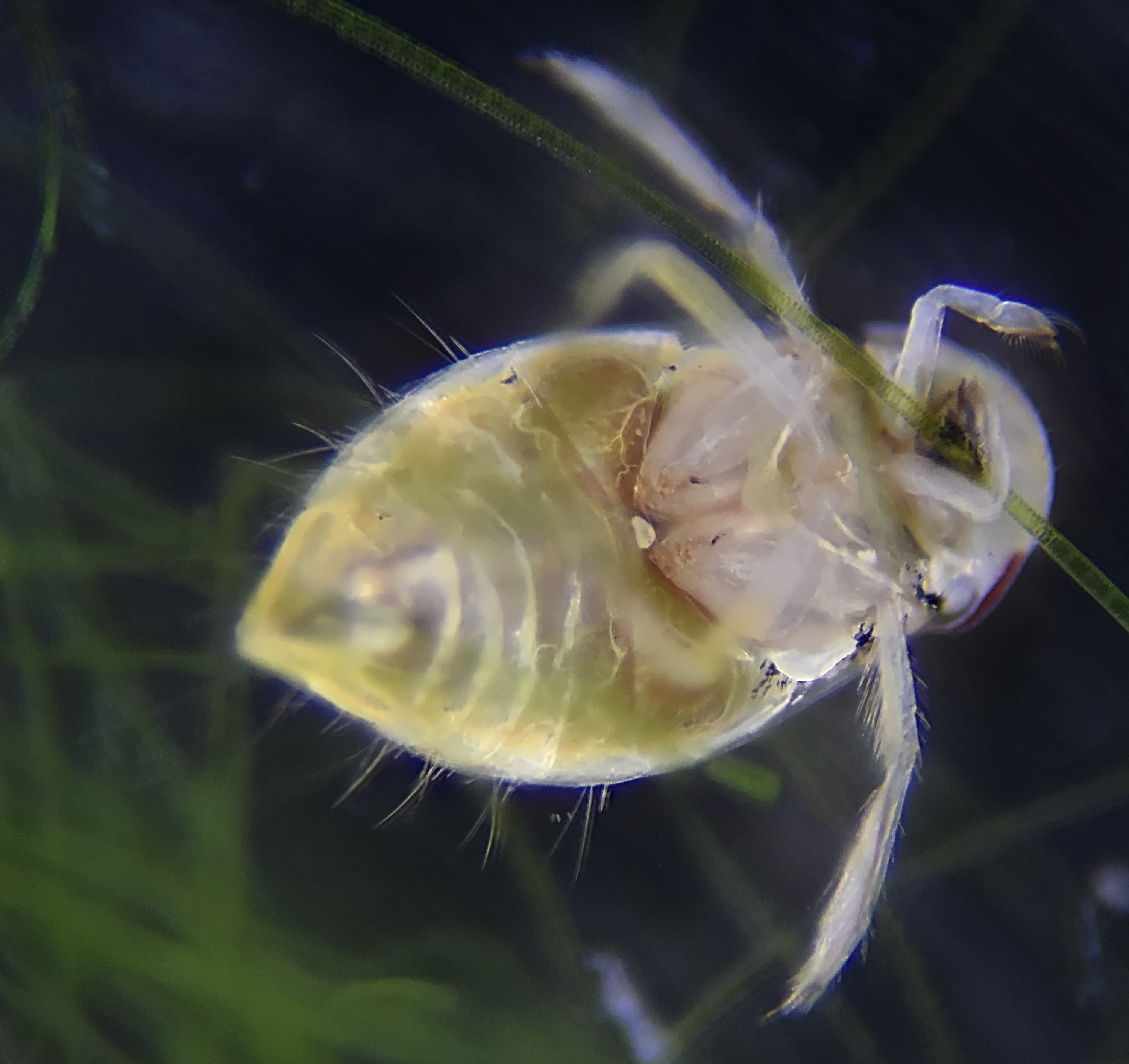Micronecta scholtzi on:
[Wikipedia]
[Google]
[Amazon]
''Micronecta scholtzi'', the lesser water boatman, is a species of pygmy water boatman in the family Micronectidae. It was first described by Franz Xaver Fieber in 1860. They are some 2 mm long and are common in freshwater ponds and lakes across Europe, preferring stagnant to moderately moving water. In Central Europe, the genus '' Micronecta'' is represented by five species, as follows:
*''Micronecta'' (''Dichaetonecta'') ''pusilla'' ( Géza Horváth, 1895)
*''Micronecta'' (''Dichaetonecta'') ''scholtzi'' ( Fieber, 1860)
*''Micronecta'' (''Micronecta'') ''griseola'' Géza Horváth, 1899
*''Micronecta'' (''Micronecta'') ''minutissima'' ( Linnaeus, 1758)
*''Micronecta'' (''Micronecta'') ''poweri'' ( ''M. scholtzi'' is easily differentiated from other species in this genus by the twisted left paramere of the male genitalia, (see traumatic insemination) the short pronotum and a distinctive dark pattern on the head. Little is known of its habits and habitat, but it is thought to flourish in the shallows of ponds or lake shores.
The male of this species produces its underwater courtship song by
''M. scholtzi'' is easily differentiated from other species in this genus by the twisted left paramere of the male genitalia, (see traumatic insemination) the short pronotum and a distinctive dark pattern on the head. Little is known of its habits and habitat, but it is thought to flourish in the shallows of ponds or lake shores.
The male of this species produces its underwater courtship song by
'Singing penis' sets noise record for water insect
BBC. Retrieved on 2011-07-08.
Douglas
Douglas may refer to:
People
* Douglas (given name)
* Douglas (surname)
Animals
*Douglas (parrot), macaw that starred as the parrot ''Rosalinda'' in Pippi Longstocking
* Douglas the camel, a camel in the Confederate Army in the American Civil ...
& Scott
Scott may refer to:
Places Canada
* Scott, Quebec, municipality in the Nouvelle-Beauce regional municipality in Quebec
* Scott, Saskatchewan, a town in the Rural Municipality of Tramping Lake No. 380
* Rural Municipality of Scott No. 98, Sask ...
, 1869)
 ''M. scholtzi'' is easily differentiated from other species in this genus by the twisted left paramere of the male genitalia, (see traumatic insemination) the short pronotum and a distinctive dark pattern on the head. Little is known of its habits and habitat, but it is thought to flourish in the shallows of ponds or lake shores.
The male of this species produces its underwater courtship song by
''M. scholtzi'' is easily differentiated from other species in this genus by the twisted left paramere of the male genitalia, (see traumatic insemination) the short pronotum and a distinctive dark pattern on the head. Little is known of its habits and habitat, but it is thought to flourish in the shallows of ponds or lake shores.
The male of this species produces its underwater courtship song by stridulating
Stridulation is the act of producing sound by rubbing together certain body parts. This behavior is mostly associated with insects, but other animals are known to do this as well, such as a number of species of fish, snakes and spiders. The mech ...
a ridge on its penis across corrugations on its abdomen. The area involved measures only 50 micrometres across, or about the thickness of a human hair. A team of biologists and sound engineers from France and Scotland have recorded ''M. scholtzi'' producing sound up to 99.2 decibels, a volume comparable to a passing freight train. The noise was so unexpectedly loud that the engineers checked the calibration of their instruments. It is classified by Guinness World Records as the loudest penis. Almost all volume is lost when sound moves from water to air, but even so remains audible to humans walking along the pond shore. This species is considered the loudest of all animals for its size. Despite knowing the mechanism of its sound production, researchers are still mystified by the volume produced and feel that once the process is understood, it could open up a useful avenue in ultrasonics.
Not many insects are known to generate sound with reproductive organs, but there is another, the pyralid
The Pyraloidea (pyraloid moths or snout moths) are a moth superfamily containing about 16,000 described species worldwide, and probably at least as many more remain to be described. They are generally fairly small moths, and as such, they have b ...
moth, ''Syntonarcha iriastis
''Syntonarcha iriastis'' is a moth in the family Crambidae. It was described by Edward Meyrick in 1890. It is found in the western Pacific, including Hong Kong, New Caledonia and most of Australia, where it has been recorded from Western Austral ...
'', which emits ultrasonic squeaks.Davies, Ella. (2011-06-30'Singing penis' sets noise record for water insect
BBC. Retrieved on 2011-07-08.
References
{{Taxonbar, from=Q1626598 Micronectinae Insects described in 1860